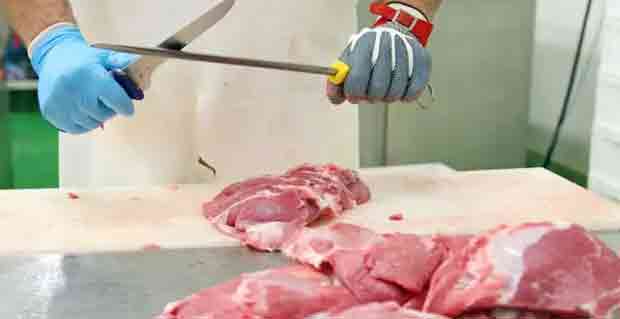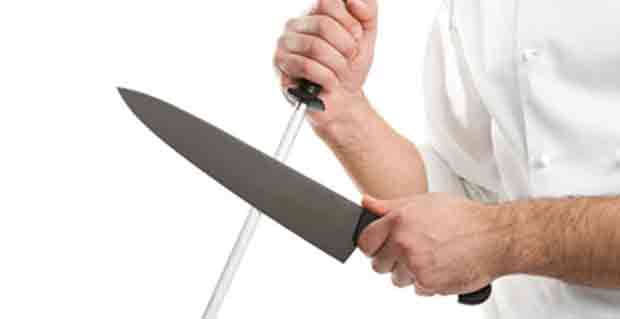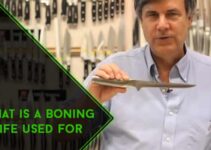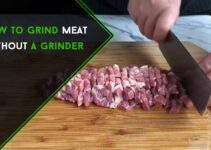The knife is the most important tool inside any kitchen. Without a functional knife within reach, no home cook or chef can create culinary magic.
It’s immensely important to take good care of knives, but not everyone is aware of how to do that properly.
Taking good care of a knife means more than just storing it properly and cleaning it regularly. You also have to take the time to maintain its edge.
To do that, you must understand how to use a honing steel. Even if you have no experience using one, it’s not too late to start learning now. Your knives will be thankful for you figuring out how to correctly work a honing steel and your performance in the kitchen will also improve.
What Does a Honing Steel do for Your Knife?

Contrary to popular belief, a honing steel does not exactly work to sharpen the edge of your knife. For that, you would need a water stone. Instead, what a honing steel focuses on is correcting the edge of your knife.
Knives are asked to do a lot in the kitchen and over time, they get beat up and bent out of shape as well. To be more specific, the sides of the knife that combine to form the edge start to move away from the middle as you use the knife more. Because of that, the knife’s edge starts to dull and it won’t be able to work as well as it previously did.
The honing steel addresses that issue by bringing the sides of the knife back into place.
How can You Tell if a Knife Needs to be Honed?
There’s a simple test you can try if you want to see how sharp your knife is.
Pick up a piece of paper and let it hang down from your hand. Grab a knife next and place it at the upper edge of the paper. Make an angled cut downward now and see how easily the knife cuts through the paper.
If the knife can’t get through that sheet of paper cleanly, that’s an indicator that it needs to be honed.
How to Use a Honing Steel in Easy 3 Ways?
The honing steel is safe to work with, but it’s easy to see why those who are unfamiliar with it can get intimidated. It all comes down to just finding the right angles and repeating the same motions. If can you do it right once, you’ll be able to pull it off with no issue in the future.
1. The Angles are Essential

You are targeting specific parts of the knife during the honing process and that means you need to hit them at the right angles to make this process work.
Unfortunately, there is no blanket rule for what the angle should be when you are honing your knife. To figure that out, you will have to look at the edge of the knife you are looking to hone.
You should err on the side of using a smaller angle rather than a bigger one during the honing session though.
If you’re trying to hone your knife and the angle you’ve created between it and the steel is too big, then the knife’s edge will be at risk of being significantly damaged and growing permanently dull. You could essentially ruin your knife if your honing angle is too big.
Use an angle that’s too small and the knife could get scratched. Scratches are preferable to permanent dulling. To stay on the safe side use an angle from 15 to 20 degrees when honing your knife.
2. Familiarize Yourself With the Right Angle
Once you’ve figured out what the right angle to use for your knife is, you can now turn your attention to simply maintaining that positioning all throughout the honing process. Of course, that’s easier said than done. Try to practice honing with an old knife first. Doing that should let you know how the process should look like and how it should feel. After practicing, you can just replicate what you’ve been doing with the knife you want to hone.
3. The Right Honing Motions
Hold your knife firmly in your dominant hand and point the honing steel into a surface with your other hand. Take your knife now and position it next to the upper half of the honing steel, but still far enough away from the handle.
With the knife pointing slightly upward, begin to pull your knife down and into you while making sure that the edge maintains contact. Do not apply too much pressure while doing this. Repeat that sequence 10 times for one side of the knife and then do the same thing for the other side.
Once you’re done, try the paper test again to see if your knife is working better.
The honing steel is not just some tool professional chefs bust out every now and then to make themselves cool. It is actually a hugely helpful instrument that can be used to quickly enhance the performance of just about any type of kitchen knife.
Now that you are aware of how to use the honing steel correctly, you can be a more capable cook inside your kitchen.



